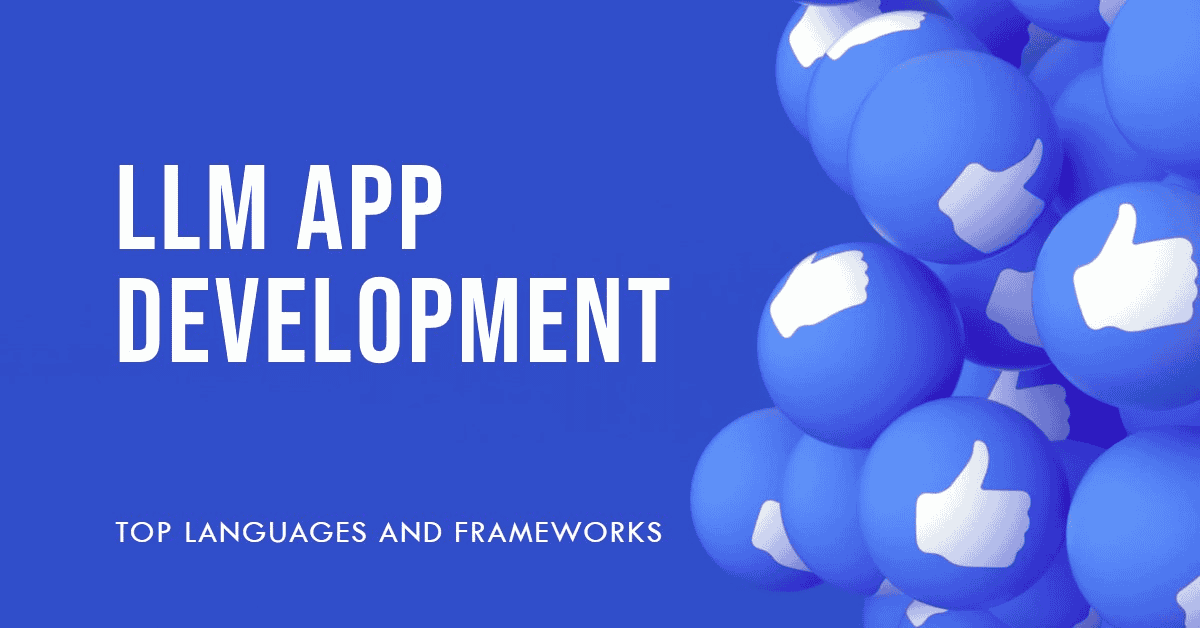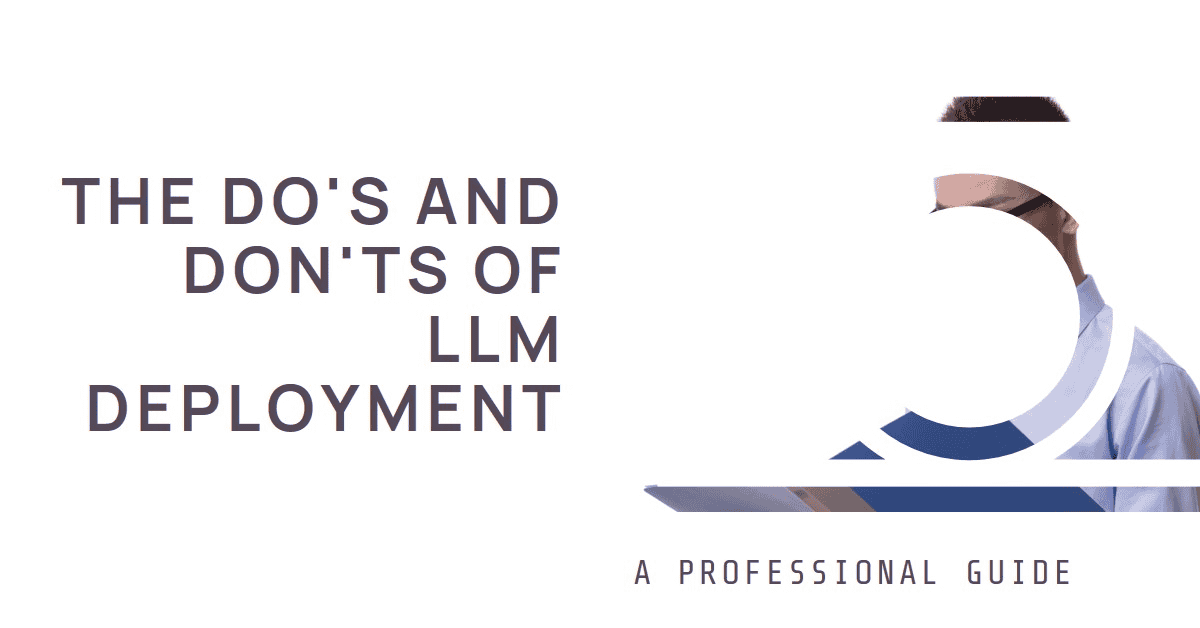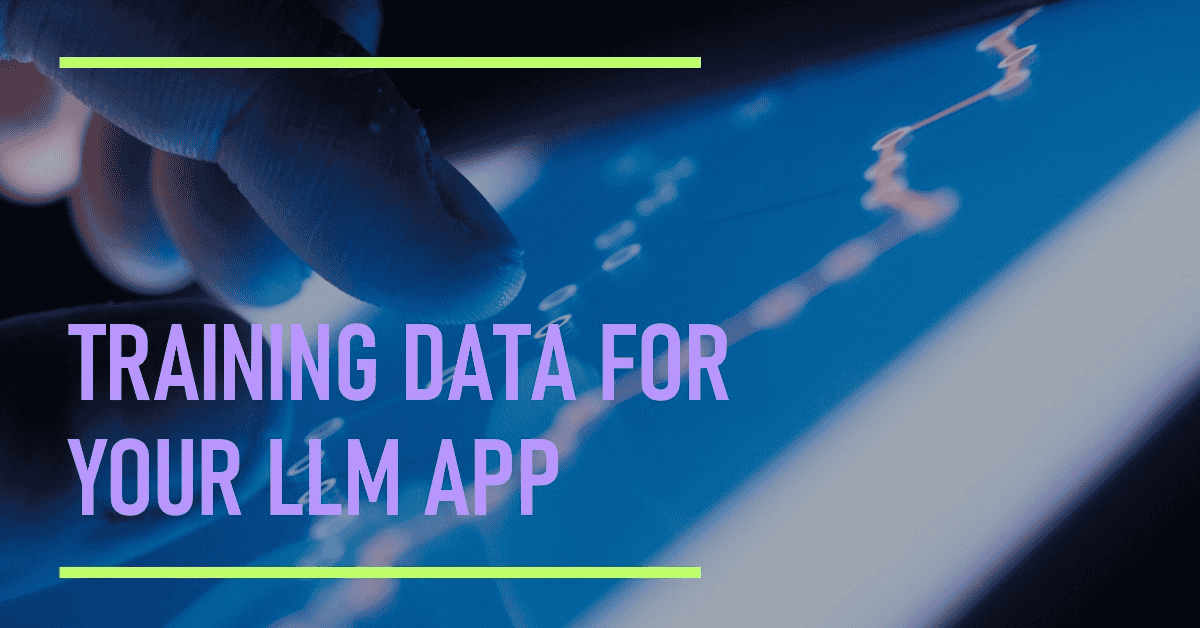
I've often been asked by fellow executives and decision-makers about the amount of training data required to build an effective application powered by large language models (LLMs). In this essay, I'll share my insights and provide practical examples to help you make informed decisions when developing your own LLM-powered applications.
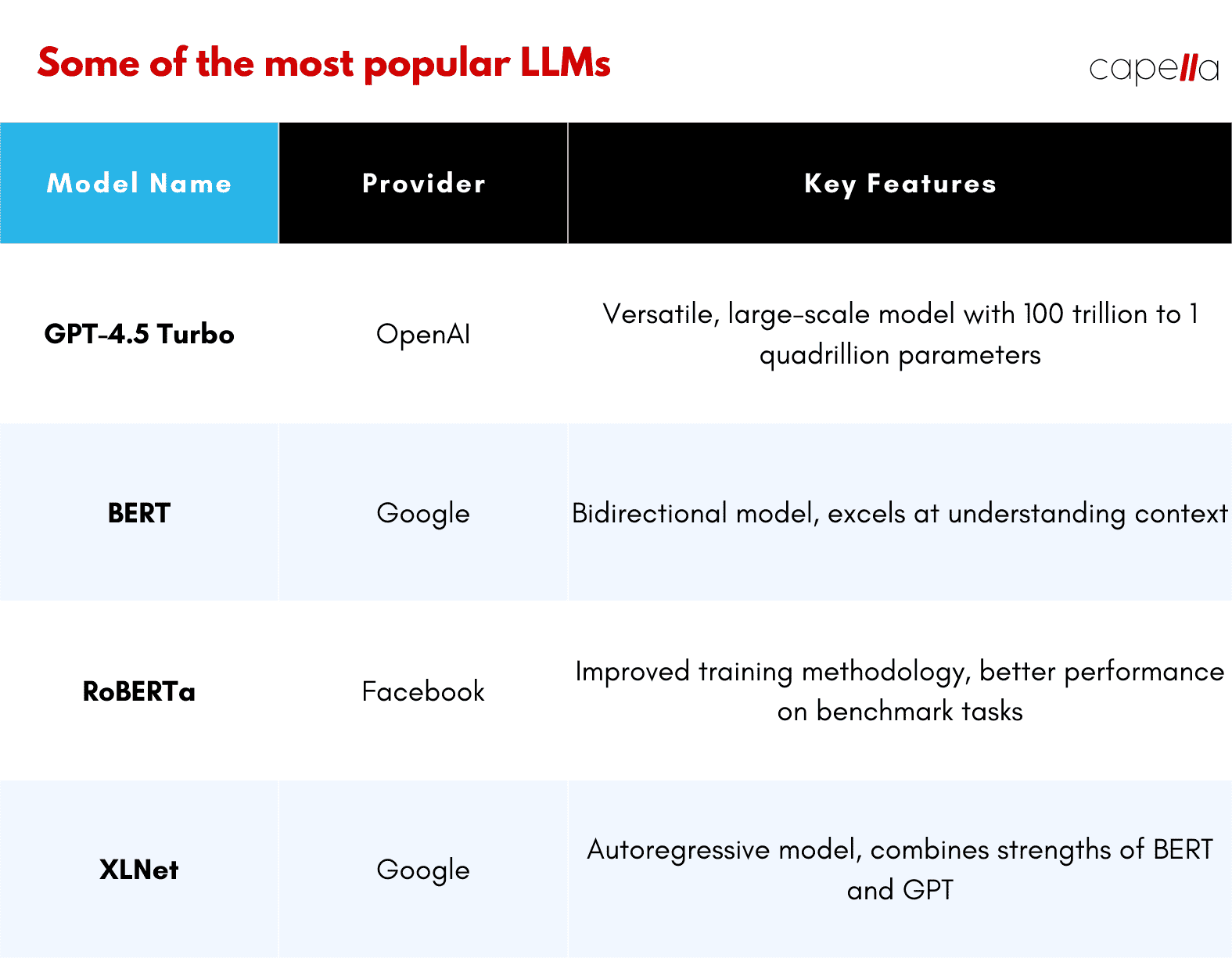
Understanding the Factors that Influence Training Data Requirements
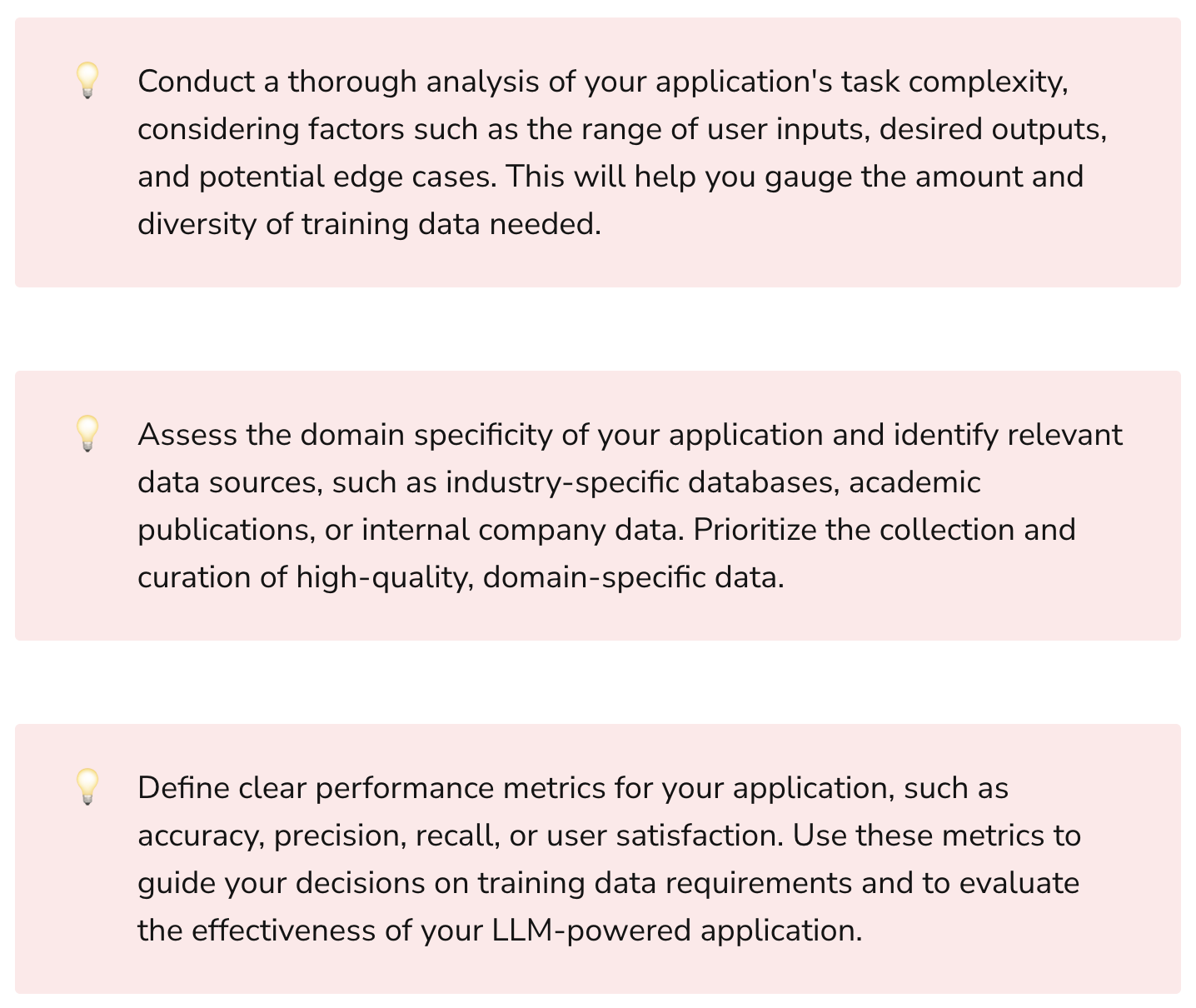
The amount of training data needed to build an effective LLM-powered application depends on several factors, including:
- The complexity of the task
- The domain specificity of the application
- The desired performance level
- The quality and diversity of the training data
Let's dive deeper into each of these factors and explore how they impact the training data requirements.

Task Complexity
The complexity of the task your application aims to tackle significantly influences the amount of training data required. For example, if you're building a sentiment analysis application for customer reviews, you might need a relatively smaller dataset compared to an application that generates creative writing prompts.
Consider the case of OpenAI's GPT-3, which was trained on a massive dataset of 570GB of text data and GPT-4 on trillions and trillions of data. This enormous amount of data allows GPT models to perform a wide range of complex tasks, from language translation to code generation. However, for a more focused application, such as a chatbot for a specific industry, you may achieve satisfactory results with a much smaller dataset.
Domain Specificity
The domain specificity of your application also plays a crucial role in determining the training data requirements. If you're building an application for a niche domain, such as legal contract analysis, you'll likely need a smaller but more focused dataset compared to a general-purpose language model.
For instance, let's say you're developing an LLM-powered application to assist radiologists in interpreting medical images. In this case, you'd need a dataset that contains a substantial amount of radiology reports, medical terminology, and associated images. While the dataset size may be smaller compared to a general-purpose language model, the quality and relevance of the data are paramount.
Desired Performance Level
The desired performance level of your application also impacts the amount of training data needed. If you're aiming for state-of-the-art performance, you'll typically require a larger and more diverse dataset. However, if you're willing to compromise on performance to some extent, you can often achieve satisfactory results with a smaller dataset.
Let's consider an example from the field of machine translation. If you're building a translation application for a specific language pair, such as English to Spanish, and you're targeting a human-level translation quality, you'll need a substantial amount of high-quality parallel data. On the other hand, if you're building a translation application for a less common language pair, such as English to Swahili, and you're willing to accept a lower performance level, you can work with a smaller dataset.
Data Quality and Diversity
The quality and diversity of your training data are equally important factors in determining the amount of data needed. High-quality, diverse data can often compensate for a smaller dataset size, while low-quality, homogeneous data may require a much larger dataset to achieve the same performance level.
For example, if you're building an LLM-powered application for sentiment analysis, a dataset containing a diverse range of customer reviews from various domains (e.g., e-commerce, hospitality, healthcare) will likely yield better results than a larger dataset containing only reviews from a single domain.
Practical Examples and Use Cases

Now that we've explored the factors influencing training data requirements, let's look at some practical examples and use cases to illustrate how these factors come into play.

Example 1: Chatbot for Customer Support
Suppose you're building a chatbot for customer support in the telecommunications industry. To train your LLM-powered chatbot, you'll need a dataset that includes:
- Customer inquiries and complaints
- Customer service representative responses
- Product and service information
- Troubleshooting guides and FAQs
Here's an example of how you could structure your training data:

In this case, a dataset containing a few thousand high-quality, domain-specific inquiries and responses could be sufficient to train an effective chatbot. The key is to ensure that the dataset covers a wide range of common customer inquiries and provides accurate, helpful responses.
Example 2: Text Summarization for Legal Documents
Let's consider another example where you're building an LLM-powered application for text summarization of legal documents. In this case, you'll need a dataset that includes:
- Legal contracts, agreements, and case files
- Annotated summaries of legal documents
- Legal terminology and jargon
To train your summarization model, you could use a dataset structure like this:

In this example, the dataset size required may be smaller compared to a general-purpose text summarization model, as the domain is highly specific. However, the quality and relevance of the training data are crucial to ensure that the model can effectively summarize legal documents.
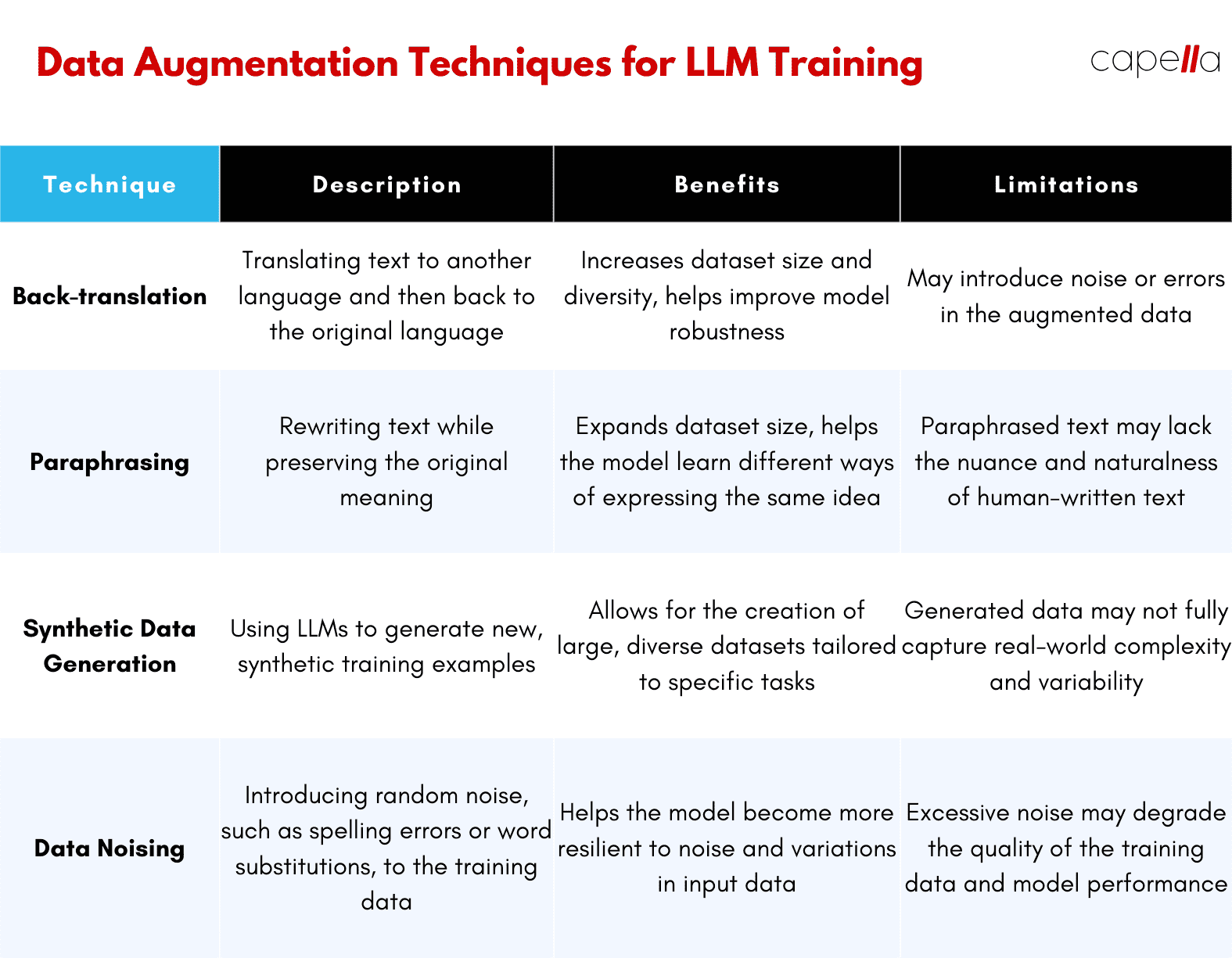
Code Snippet: Fine-Tuning an LLM for Text Classification
To illustrate how you can fine-tune an LLM for a specific task, let's consider a text classification problem where you want to categorize customer reviews as positive, negative, or neutral. Here's a code snippet using the Hugging Face Transformers library in Python:
In this example, we use the pre-trained BERT model as the base LLM and fine-tune it on our labeled customer review dataset. The amount of training data required will depend on the complexity of the classification task and the desired performance level. However, by leveraging a pre-trained model, we can often achieve good results with a relatively smaller dataset compared to training from scratch.
Conclusion
The amount of training data needed to build an effective LLM-powered application depends on various factors, including task complexity, domain specificity, desired performance level, and data quality and diversity. By carefully considering these factors and leveraging techniques like fine-tuning pre-trained models, you can often achieve satisfactory results with a smaller, high-quality dataset.
Work closely with your data science and engineering teams to assess your application's specific requirements and develop a data strategy that balances performance, cost, and time-to-market. By understanding the factors that influence training data requirements and exploring practical examples, you can make informed decisions and build successful LLM-powered applications that drive value for your organization.

- Q: How do I determine the minimum amount of training data required for my LLM-powered application?
A: The minimum amount of training data depends on factors such as task complexity, domain specificity, desired performance level, and data quality. Analyze these factors and start with a smaller, high-quality dataset. Gradually increase the size while monitoring performance to find the optimal balance. - Q: Can I use pre-trained LLMs for my application, or do I need to train from scratch?
A: Pre-trained LLMs are a great starting point for most applications. They have been trained on vast amounts of data and can be fine-tuned for specific tasks with smaller datasets. Fine-tuning a pre-trained LLM is often more efficient than training from scratch. - Q: How can I ensure the quality and diversity of my training data?
A: Implement data quality checks, such as removing duplicates, correcting errors, and ensuring consistency. Enhance diversity by collecting data from various sources, applying data augmentation techniques, and using stratified sampling to maintain class balance. - Q: What are some common data augmentation techniques for NLP tasks?
A: Common data augmentation techniques for NLP include back-translation, paraphrasing, synonym replacement, random insertion/deletion/swapping of words, and using pre-trained language models to generate synthetic examples. - Q: How do I choose the right evaluation metrics for my LLM-powered application?
A: The choice of evaluation metrics depends on the specific task. For classification tasks, use accuracy, precision, recall, and F1 score. For language generation tasks, consider metrics like BLEU, ROUGE, or perplexity. Select metrics that align with your application's goals and user expectations. - Q: Should I collect and annotate my own training data or purchase third-party datasets?
A: The decision depends on your resources, time constraints, and data requirements. Collecting and annotating in-house data ensures quality and specificity but is time-consuming and costly. Purchasing third-party datasets can be faster and more cost-effective but may not perfectly match your needs. Consider a hybrid approach or use crowdsourcing for a balance. - Q: How can I reduce the training data requirements for my LLM-powered application?
A: Leverage pre-trained LLMs and fine-tune them for your specific task. This transfer learning approach reduces the need for large amounts of task-specific data. Additionally, apply data augmentation techniques to increase the effective size of your training dataset. - Q: What should I consider when selecting a pre-trained LLM for my application?
A: Consider factors such as the model's architecture, pre-training data size and domain, computational requirements, and performance on similar tasks. Look for models that align with your application's needs and have a proven track record in your domain. - Q: How often should I update my training data and retrain my LLM?
A: The frequency of updates depends on the nature of your application and the rate at which new data becomes available. Monitor your application's performance and user feedback regularly. Update your training data and retrain your model when you notice a decline in performance or when significant new data becomes available. - Q: Can I use LLMs for low-resource languages or domains with limited training data?
A: While LLMs typically require large amounts of training data, there are strategies to handle low-resource scenarios. Consider using multilingual pre-trained LLMs, cross-lingual transfer learning, or few-shot learning techniques. Additionally, focus on collecting high-quality, representative data and apply data augmentation to maximize the value of your limited dataset.

Rasheed Rabata
Is a solution and ROI-driven CTO, consultant, and system integrator with experience in deploying data integrations, Data Hubs, Master Data Management, Data Quality, and Data Warehousing solutions. He has a passion for solving complex data problems. His career experience showcases his drive to deliver software and timely solutions for business needs.

